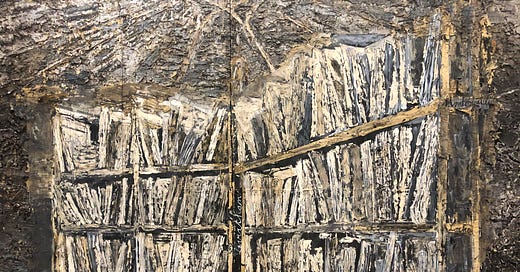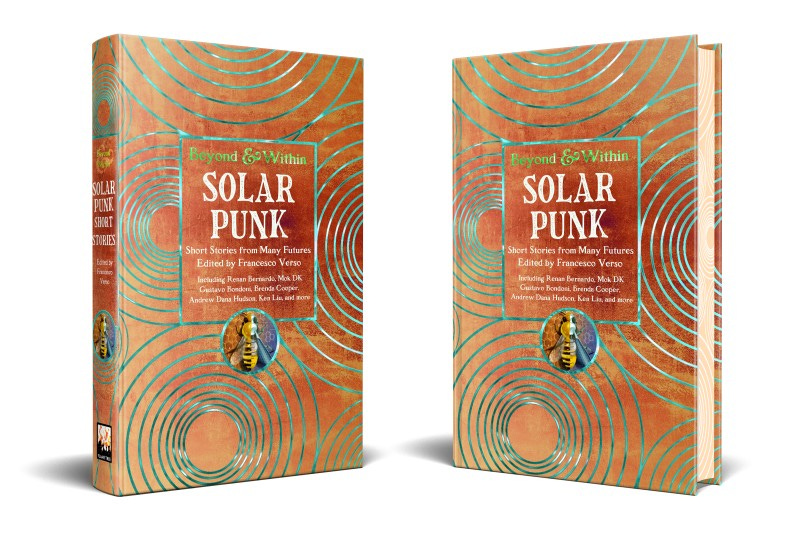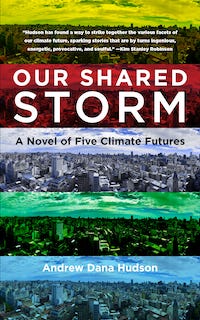I’ve been doing a great deal of reading lately. Of course I’m a big fan of books, but I’ve never been like those booktok fiends who put down 100+ books a year. Like a lot of writers, I struggle to produce fiction when I’m consuming that much of it. But over the last four months, due to various academic obligations, I’ve gotten close to hundred-book lifestyle, reading some 25 novels and short story collections. Most have been literary or historical fiction, a change from my usual diet of speculative and mystery. It’s been a real education, both in the genres and in my own tastes.
At about the halfway mark working through this long list, my partner C and I were hiking, and I ended up creating a framework for thinking about what makes a book good and enjoyable. (See below for an exciting new project from C.) It’s all about creating a balanced meal.
Basically, with many an asterisk and exception along the way, I imagine that all books contain greater or lesser portions of the following categories:
Veggies: the literary stuff, the writerly observations, the subtle insights into the nature of human life. This is the ingredient that’s supposed to be good for you, that builds empathy and deepens your understanding of the world, and other people, and yourself. Can be bland or very flavorful, depending on the style. Some people really love vegetables, and arguably they’re really healthy for it. Most of us, I think, learn to appreciate them as we mature but still don’t want just salad for every meal.
Carbs: the page turning parts of a book, the genre stuff — mystery, romance, humor, gore, action, intrigue, magic, and plot. Can get a little formulaic, but that’s okay; fries don’t have to be revolutionary to be good. Some people eat nothing but cheap carbs day in and day out, but most readers know that’s not an optimal diet. Still, nothing wrong with indulging in a trashy romance or pulpy thriller when the craving strikes.
Protein: the parts of novels that are actually novel, the big ideas and unique characters and compelling hypothetical scenarios. This is the ingredient that’s memorable, that sticks with you, that make you feel full when you’re done. Not the same as veggies, because we’ve all read a beautifully written literary book with no ideas. We’ve also all read an SFF book that overflows with weird concepts but does it without particularly elegant prose.
Now, very much like food, this theory tries to account for the reality that books are a matter of taste. Everyone has preferences, and everyone gets hankerings for something in particular and can’t articulate why. And, while some people have very particular habits, most enjoy variety.
What really matters is how you combine them. Some books are basically literary salad with some croutons of plot. Or you can elevate a relatively familiar plate of genre pasta by adding some vegetables: aesthetic flourishes or thoughtful interiority. Classic SFF is a lot of meat-and-potatoes, but veggies are creeping in as the genre diversifies, which is a good thing, even though it pisses off some of the old guys. And sometimes you read something high concept and beautiful that eschews those staple grains entirely.
But I think most successful books offer a balanced meal. They are at once well-written, hard to put down, and offer fresh ideas. By ‘successful’ I mean the books that achieve a certain cultural escape velocity and become memorable, which aren’t necessarily the books that win awards. Literary prize short lists — or, heck, even the Hugos and Nebulas — are full of books that most readers forget about a year later.
One of the best non-speculative books I read this year was Detransition, Baby by Torrey Peters. It’s a 2021 novel in which a detransitioned trans woman gets his cis boss pregnant and asks his trans ex to help them raise the baby. It’s full of thoughtful vegetable insight into the trans experience, exquisitely seasoned with wit and cleverness. There’s a modest spread of complex carbs in there, as the humor and tension of the relationships made me eager to keep reading. And there's a tender chunk of protein at the center: the novel family arrangement the characters try to make work. The book just hit the sweet spot for me, and I suspect it’s one I’ll be thinking about for a while, and might even reread.
Not that every balanced meal is delicious, of course. (I read Gabrielle Zevin’s megahyped Tomorrow and Tomorrow and Tomorrow, and while I appreciated the smart prose, the quick pace, and the unique ideas, it wasn’t to my tastes.) This is far from a perfect metaphor, but I do think it can be a useful one. It’s good to remember that what makes a book well written isn’t always what makes it readable, and that neither of those qualities necessarily make a book’s ideas any good. And it’s good to remember that we can do all three! We can do genre, and have it be smart, and also write about the new and novel, all in the same book. We can wrap our big ideas in plot-dumplings and sauce them with spicy, thoughtful prose.
Anyway, it’s burnout time in the semester, and I’m moving house next week, so I’m going to keep this short. Look below for a bunch of other cool stuff I and people I know are up to.
Cosmic Mystery Club Newsletter
My partner CY Ballard has just launched a really cool newsletter project:
! In our household, we do a lot of talking about how books and genres work (unsurprising, given the above). One genre that we’re both big fans of is what C calls the ‘cosmic mystery’ — a detective/investigation story that ends up bumping up against the speculative or the unreal. Examples might include The City & The City, Twin Peaks, or Disco Elysium. The novel that I’ve now got on submission falls into this category. (Editors, do reach out if you’re interested…)For a few months now, C has been noodling on this genre, and has decided to publish a series of essays breaking down cosmic mysteries. Here’s her introductory post, which makes a great case for the appeal of the cosmic mystery:
Even in the coziest of mysteries, it sometimes feels like you’re brushing up against some larger apparatus moving the world around you. Of course, the real world feels like this too. Which is why there’s something about the presence of cosmic elements in a mystery that simply feels right. The cosmic serves as an expression of forces of incomprehensible scale, manifesting in staggering ways, reflecting how forces like late-stage capitalism, systemic injustice, global conflict, and climate disaster shape our lives.
Anyway, you should absolutely subscribe to this free monthly newsletter to get these essays as she puts them out, and you should definitely spread the word to any fans of the mysterious and/or cosmic.
Updates + Appearances + Miscellany
Sci-fi Economics Residency — A month from now I’ll be in Messina, Italy participating in this very cool interdisciplinary event on translating new economic thinking into grounded futures scenarios. It’s invite only, but you can sign up to watch the keynote online here. Very much looking forward to putting heads together with SF-loving economics scholars and other writers, including my friend and ASU compatriot
.Turin International Book Fair — After Messina, I’ll be heading to Turin for a few days to check out one of the largest book festivals in Europe. There I’ll do some long-delayed events with Francesco Verso on solarpunk and my Italian-language short fiction collection Lo Stato Solare. If you happen to be in Italy in May (and judging by recent signups to this newsletter, I know some of you are), please reach out and we can see about connecting!
C2 Montréal — As mentioned last month, I’ll also be speaking at this very cool three-day conference on May 22! It’s an exciting multidisciplinary, multitopic event, and I’m stoked to get to be in conversation with artist Olalekan Jeyifous on the future of solar energy.
The Concept Shoppe: A Rocky Cornelius Consultancy — I’ve written a sequel to my story “The Uncool Hunters,” and it will be coming soon to Escape Pod. Very excited for Rocky Cornelius and Amherst Swarthmore, amoral creative consultants extraordinaire, to be returning to this top-tier SF podcast for another grocery-themed capitalist-caper!
Recommendations + Fellow Travelers
My friend Liam Carpenter-Urquhart, whom I met while visiting the Stockholm Resilience Centre last year, has helped put out a very slick and interesting digital anthology as part of the Future Ecosystems of Africa program. Mombera Rising was written by Malawian writers Ekari Mbvundula Chirombo and Muthi Nhlema, and includes several speculative eco-fiction stories envisioning Ngoni futures. The book is free to download, and the website also includes a podcast on the work that went into the anthology. Check it out!
Casey Clowes, friend of mine and progressive champion of renewable energy, just won a seat on the SRP board! For those who don’t know Arizona energy politics, SRP (the Salt River Project) is the largest public utility in the USA. It also runs one of the most fantastically undemocratic elections in the country. To vote in SRP board elections, you don’t have to be a customer but you do have to be a land owner, and votes are apportioned based on the acreage you own. It’s wild! Some seats are controlled by families who own big tracts of desert, literally passing the seat down from father to son like landed fucking gentry. But after this last election, the insurgent pro-renewables faction now controls 6-7 out of 14 seats — very close to being in a position to super-charge solar energy in AZ!
Speaking the great Francesco Verso (mentioned above), the Italian-language solarpunk anthology he put out a few years ago is now getting an English-translation as part of Flame Tree Publishing’s Beyond and Within short fiction series. Titled Solarpunk: Short Stories from Many Futures, it features some stories by anglophone writers, including myself and Sarena Ulibarri, but also includes stories from around the world that have never appeared in English. Definitely give it a preorder, and, I mean, just look at this incredible cover:
Art Tour: Paint-peeled Bird and Kid
For a while I’ve been wanting to share this wonderful painting I pass all the time walking or biking around my neighborhood. In the time since I first considered posting it here, the elements have started to take their toll — the sun is starting to get strong, and we’ve had an usually wet spring (whatever that means anymore). The other I day I saw it in crisp afternoon light, and decided this was my moment to capture it. I wish I knew the artist, but that mystery is a little bit part of the fun of public murals and street art.
If you like the this newsletter, consider subscribing or checking out my recent climate fiction novel Our Shared Storm, which Publisher’s Weekly called “deeply affecting” and “a thoughtful, rigorous exploration of climate action.”







